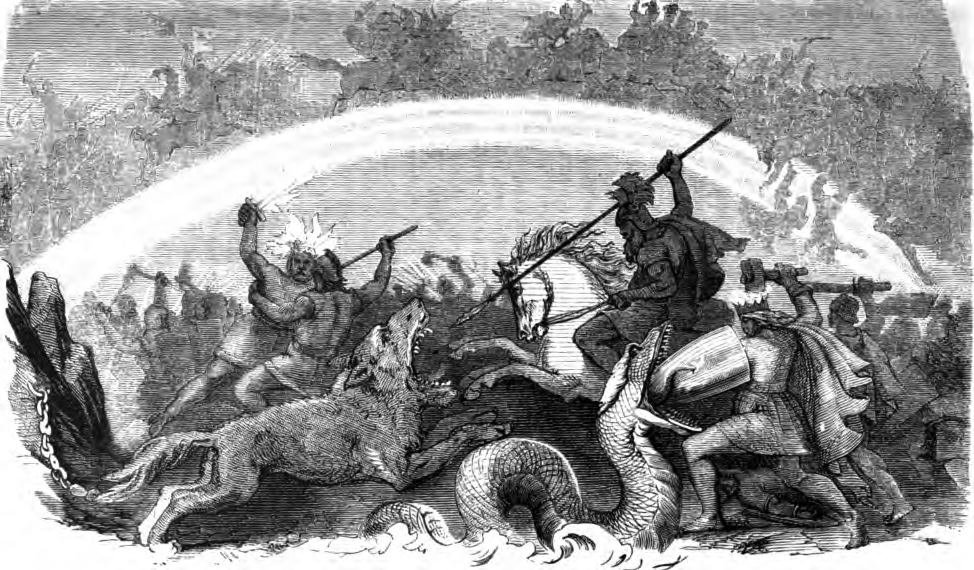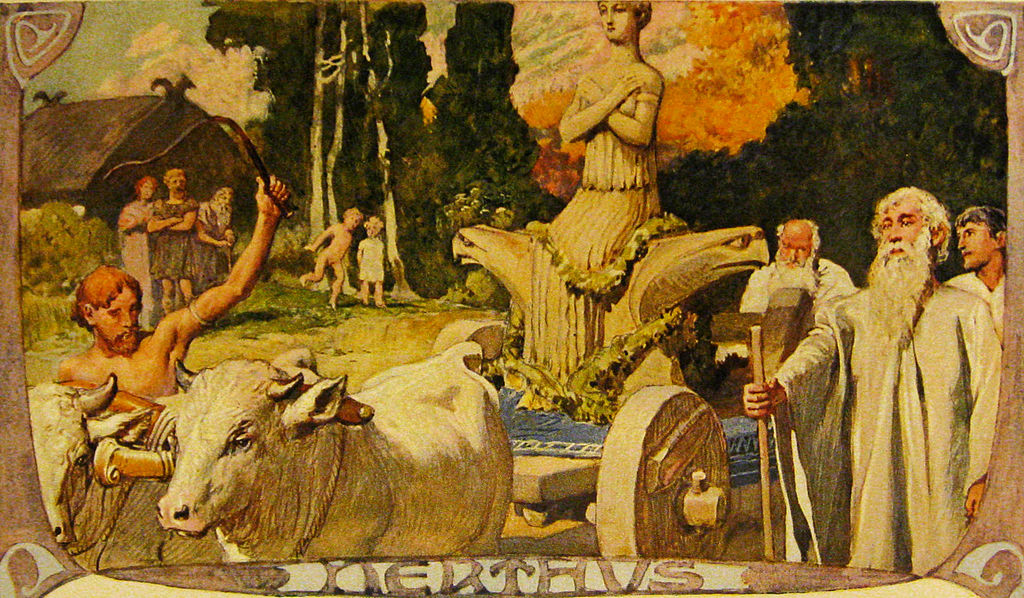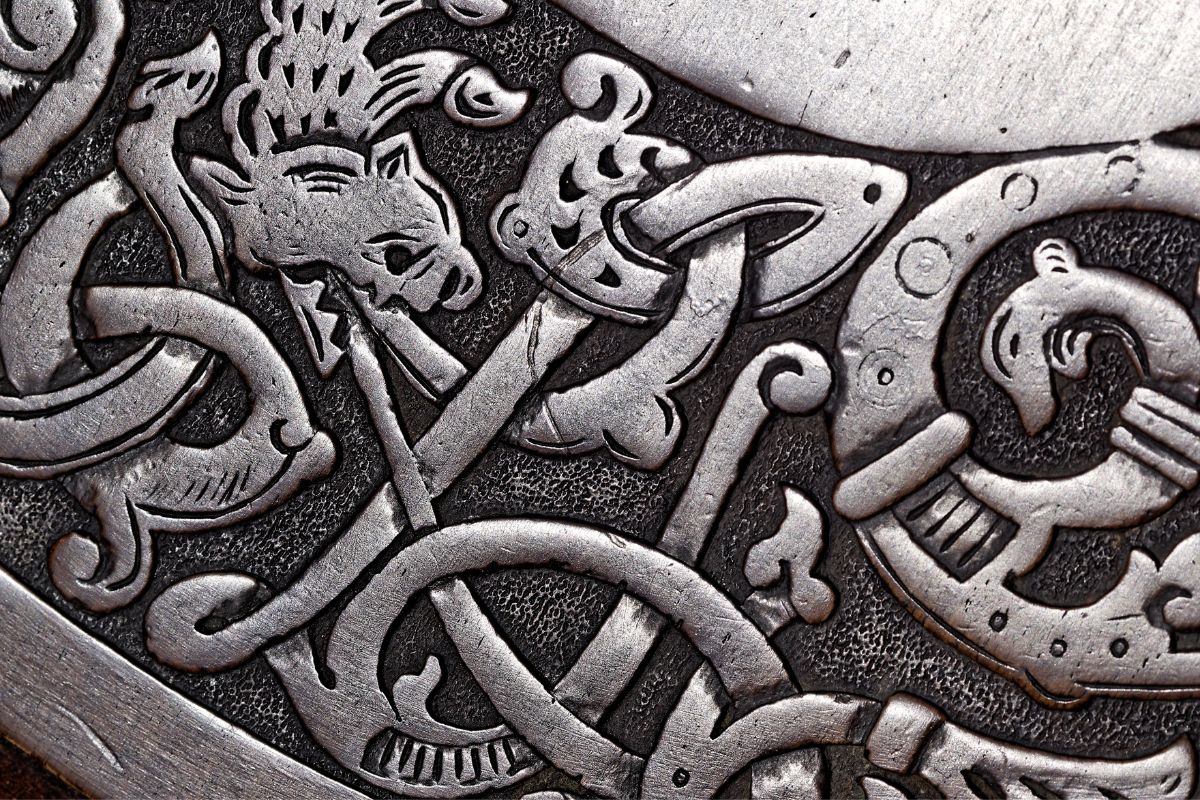The first Germanic religion appeared in the third century AD during the “Migration Period” after the fall of the Western Roman Empire. Scandinavians (also known as North Germanic) used Germanic religion to form their own Old Norse version. It was also the basis from which Old English speakers created Anglo-Saxon and Continental German paganism.
Germanic paganism dates from the Iron Age until the arrival of Christianity in the Middle Ages.
What Is Norse Paganism?
Norse paganism (sometimes called heathenry) originated in the old Norse religion practiced in Scandinavia before Christianity appeared.
Historians believe Norse paganism dates back as far as the Nordic Bronze Age. There were indications it was already established around 2,000 years ago: Tacitus, the Roman historian born around 56AD, observed that Germanic peoples were polytheistic; that is, they believed in more than one god or goddess.
Norse mythology and deities
Much of the Norse mythology we know today came from two volumes of text and poems, the Prose Edda and the Poetic Edda.
Norse cosmology dictates nine realms sit in the branches or the roots of Yggdrasil, the world tree. Nordic paganism has two principal pantheons of gods: the Æsir and the Vanir.
It is unique in how its timeline chronicles their gods’ beginning and end, i.e., Ragnarök.

Life after death was a big part of Norse pagan life. They believe that the dead live on in realms like Valhalla, Hel, or Fólkvangr.
Anglo-Saxon paganism drew heavily from the Norse variety and worshipped gods with similar names like Woden (Odin), Thunor (Thor), and Tiw (Tyr). Indeed, the religions of Pagan Europe tended to feature the same characteristics, namely polytheism, recognition of female deities, and a consideration of the divinity of nature.
Norse Paganism today: the Ásatrú religion
Ásatrú is a religious belief that resurrects aspects of Viking and Icelandic pre-Christian religion.
Iceland recognized the faith in 1973, and with more than 5,000 members, the BBC reported in 2019 that it was one of the fastest-growing religions in that country.
What Is Germanic Paganism?
Germania was what the Romans called the area east of the Rhine, and it was here that Germanic paganism originated, producing variations like Norse paganism. The early Germanic religious culture was itself influenced by the Celtic version and had its roots in the Proto-Indo-European religion.
Archaeological discoveries show that Germanic pagans used some of the same practices as the Celts. These rituals included divination and sacrifice and had a strong spiritual connection with nature.
Germanic tribes built a few temples where they worshiped their gods, but most rituals, including sacrifices (sometimes human!), were conducted outside, especially in forests or “groves.”
Sacred groves were the dwelling place of the ancient Germanic goddess Nerthus and an area of reverence for the Semnone tribe.

Germanic paganism: written evidence
Few written accounts of Germanic paganism still exist, and the extant examples were mainly written by non-followers. Spoken reports were also discarded as Christianity took a foothold in medieval Germany, Scandinavia, and England.
Other middle-age Christian works like the Old English Beowulf and the Middle High German epic poem Nibelungenlied (or Song of the Nibelungs) are two examples of preserved Germanic religious mythology.
The Roman emperor Theodosius I officially banned the pagan religion in 391 AD.

The Differences Between Germanic And Norse Paganism
Norse paganism and Anglo-Saxon paganism were offshoots of Germanic paganism.
So, what was Odin to the Norse was Wotan in Germanic mythology. He was Wodan to the continental Saxons and Woden to the Anglo-Saxons.
The goddess Nerthus is generally considered to bear some relation to the Vanir god Njörðr (Njord).
“Mars Thincsus,” one of a quartet of Celtic and Germanic goddesses of victory called the Alaisiagae, is linked to the Norse god Týr.
Norse religious rituals were often conducted in halls or “hofs.” The most famous is the one found in Gama Uppsala, Sweden. Germanic pagan rituals were usually outside (although the Norse religion also used sacred groves for sacrificial offerings).

Similarities Between Norse And Germanic Paganism
The religions of Pagan Europe tended to feature the same characteristics, namely polytheism, recognition of female deities, and a consideration of the divinity of nature.
- Old Norse paid particular attention to the role of the afterlife in their religious beliefs.
- The god of thunder was Thor to the Germans and the Norse, and Thunor to the Anglo-Saxons.
- Runes were commonly used in both belief systems. Their use started in the first century AD.
- Both religions made sacrificial offerings outside in sacred groves. The Norse called their blood sacrifices “blót.”
Germanic Vs. Norse Deities
Several Germanic pagan deities recur among the Germanic peoples, most commonly Wodan or Wotan to Germanic peoples, Woden to the Anglo-Saxons, or Odin to the Norse.
The Norse god Thor (or Þórr) is Donar to continental Germanics and Þunor to the Anglo-Saxons.
*Also, make sure to check my article on Norse Gods Vs. Greek Gods.
Studies of Germanic and Norse Mythology in Modern Literature
Germanic Paganism
William Beare’s 1964 work called Tacitus On The Germans gives a good insight into the Roman writer’s thoughts on the Germanic tribes and their beliefs.
European Paganism: The Realities of Cult from Antiquity to the Middle Ages by Ken Dowden is a thorough account of ancient European pagan belief systems.
Norse Mythology
Neil Gaiman’s Norse Mythology brings tales about the Norse gods and their world to life and is an accessible, modern take on the Viking age. Ideal for beginners, this book has been tremendously successful and is consistently among the top-ranked results when you search for the best publications on Norse mythology.
Tales of Norse Mythology by Helen A. Guerber would serve as a secondary or tertiary step into the world of the Norsemen. Guerber’s style is complex and aimed at more experienced readers. It is very highly regarded and has a five-star rating on Amazon.

